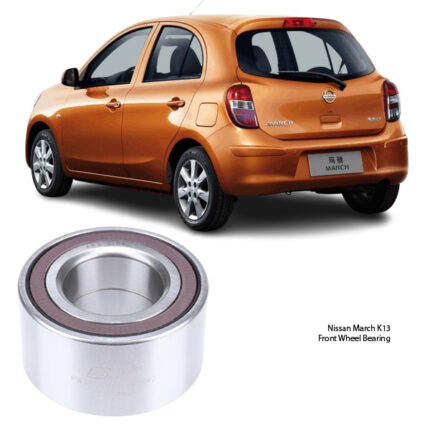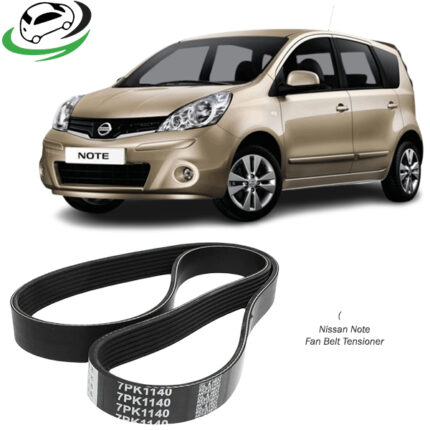-11%
Get Toyota Hilux Revo Front Brake Disc 43512-0K100 in Kenya
The front brake disc, also known as a brake rotor, is a critical component of a vehicle’s braking system. It plays a vital role in ensuring the safety and performance of a vehicle by providing the necessary friction to slow down or stop the wheels. Brake discs work in conjunction with brake pads, calipers, and the hydraulic braking system to convert kinetic energy into heat energy, effectively reducing the vehicle’s speed.
This article will provide a detailed explanation of front brake discs, including their function, types, materials, benefits, common issues, and maintenance tips.
Function of Front Brake Discs
Front brake discs are designed to provide efficient braking performance by working alongside brake pads and calipers. When the brake pedal is pressed, the master cylinder pushes brake fluid into the caliper, which in turn squeezes the brake pads against the brake disc. This friction generates heat and slows down the rotation of the wheel, bringing the vehicle to a stop.
Key Roles of the Front Brake Disc:
- Friction Generation – Brake discs provide a surface against which brake pads can press to generate friction and slow down the vehicle.
- Heat Dissipation – Brake discs are designed to disperse heat generated during braking, preventing overheating.
- Stability and Control – By allowing controlled braking, brake discs help maintain vehicle stability, especially in emergency braking situations.
The front brake discs are particularly crucial because most of the braking force (approximately 70%) is exerted on the front wheels due to the vehicle’s forward weight transfer during braking.
Types of Front Brake Discs
Front brake discs come in different designs and materials to enhance performance, durability, and heat dissipation. The most common types include:
1. Solid Brake Discs
- These are simple, flat discs with no ventilation.
- Suitable for smaller cars or vehicles that do not require heavy braking power.
- Cost-effective but can overheat under intense braking.
2. Vented Brake Discs
- Feature internal cooling vanes that improve heat dissipation.
- Commonly used in modern vehicles for better braking performance.
- Reduce the risk of brake fade during prolonged use.
3. Drilled Brake Discs
- Have holes drilled into the surface to improve heat dissipation and reduce weight.
- Help prevent brake fade by allowing gases and water to escape.
- Used in performance and sports vehicles.
4. Slotted Brake Discs
- Feature shallow grooves on the surface that enhance braking efficiency.
- Help remove dust, dirt, and gases from the contact area.
- Commonly used in high-performance and off-road vehicles.
5. Carbon-Ceramic Brake Discs
- Made from advanced materials that provide superior heat resistance and longevity.
- Used in high-performance sports cars and luxury vehicles.
- Expensive but highly durable and resistant to brake fade.
Materials Used in Front Brake Discs
Brake discs are manufactured using different materials to suit various driving conditions and vehicle types. The most common materials include:
1. Cast Iron
- The most widely used material due to its cost-effectiveness and durability.
- Offers excellent heat absorption but can be heavy.
2. Carbon-Ceramic
- High-performance material with exceptional heat resistance and low weight.
- Used in racing and luxury vehicles due to its longevity and braking efficiency.
3. Stainless Steel
- Corrosion-resistant and durable.
- Commonly used in motorcycles and high-performance vehicles.
4. Composite Materials
- A combination of different materials for improved performance and durability.
- Often used in modern high-performance vehicles.
Benefits of Front Brake Discs
1. Efficient Braking Performance
Front brake discs provide superior stopping power, ensuring quick and reliable braking.
2. Better Heat Dissipation
Ventilated, drilled, or slotted discs help prevent overheating and brake fade.
3. Durability and Longevity
High-quality brake discs can last thousands of kilometers with proper maintenance.
4. Enhanced Vehicle Stability
Efficient braking contributes to better vehicle control, especially in emergency situations.
5. Improved Performance in Wet Conditions
Drilled and slotted brake discs help prevent water buildup, ensuring effective braking in rainy conditions.
Common Issues with Front Brake Discs
Despite their durability, front brake discs can develop issues over time. Some common problems include:
1. Brake Disc Warping
- Caused by excessive heat buildup, leading to uneven surfaces.
- Results in vibrations and reduced braking efficiency.
2. Scoring and Grooves
- Caused by worn-out brake pads or debris getting lodged between the pads and disc.
- Reduces braking performance and requires resurfacing or replacement.
3. Brake Fade
- Happens when excessive heat reduces the friction between brake pads and discs.
- Common in high-performance driving or prolonged braking.
4. Rust and Corrosion
- Can occur if the vehicle is not used regularly or exposed to moisture.
- Surface rust can be removed, but deep corrosion may require replacement.
Maintenance Tips for Front Brake Discs
To ensure optimal braking performance and extend the life of front brake discs, follow these maintenance tips:
1. Regular Inspections
- Check for signs of wear, warping, or scoring on the brake discs.
- Inspect the brake pads and replace them before they wear down completely.
2. Proper Brake Pad Replacement
- Always replace brake pads in pairs to ensure even wear.
- Use high-quality brake pads for better performance and durability.
3. Avoid Excessive Braking
- Avoid sudden and harsh braking whenever possible.
- Use engine braking when driving downhill to reduce brake wear.
4. Keep the Brake System Clean
- Remove dust, dirt, and debris from the braking components.
- Use brake cleaner to prevent contamination.
5. Check for Brake Fluid Leaks
- A low brake fluid level can affect braking performance.
- Ensure there are no leaks in the brake lines or calipers.
6. Replace Worn or Warped Discs
- If a brake disc is heavily worn or warped, replace it promptly.
- Always replace both front brake discs at the same time for balanced braking.
Conclusion
The front brake disc is a crucial component of a vehicle’s braking system, responsible for providing the necessary friction to slow down and stop the vehicle safely. Different types of brake discs, such as vented, slotted, and drilled, offer enhanced performance for various driving conditions.
Regular maintenance, including inspections, timely brake pad replacements, and avoiding excessive braking, can extend the lifespan of front brake discs and ensure optimal performance. If signs of wear, warping, or brake fade appear, addressing them promptly will keep the vehicle safe and prevent costly repairs.
Follow us on Facebook for more parts.



